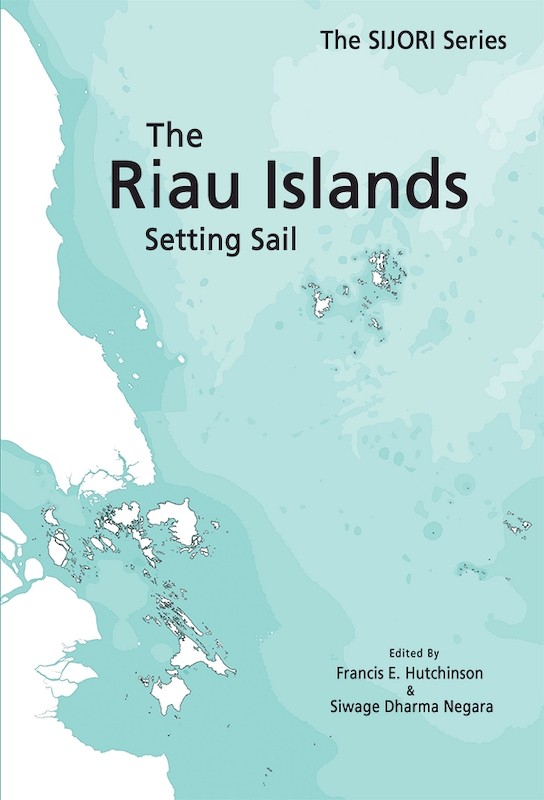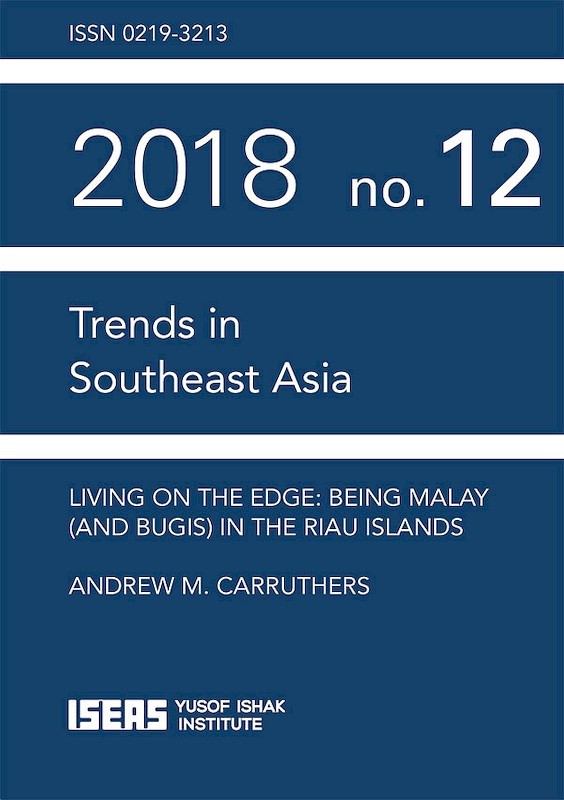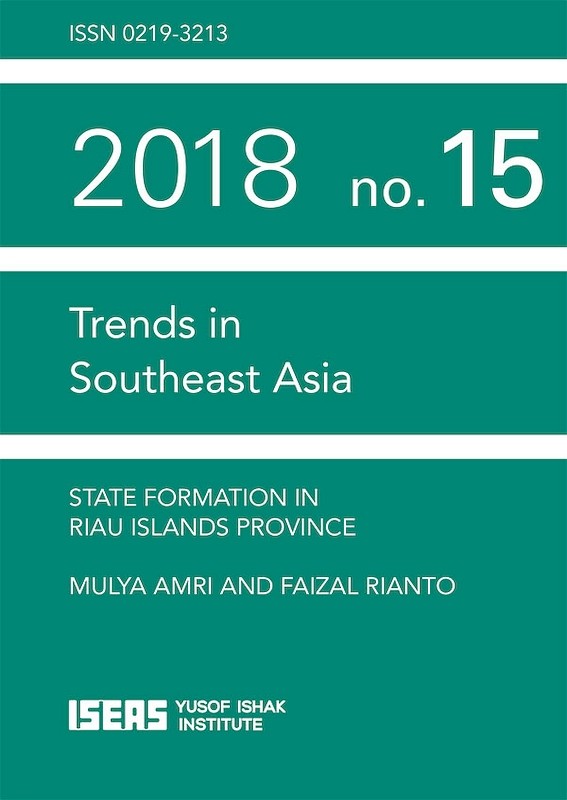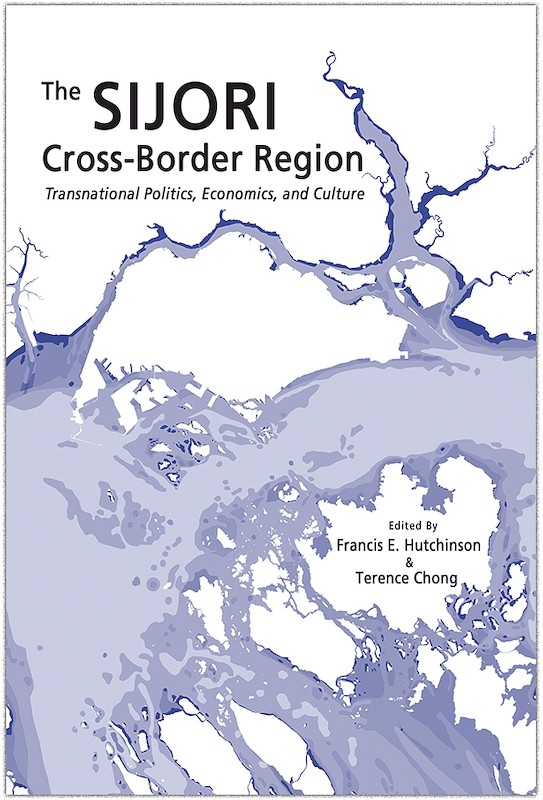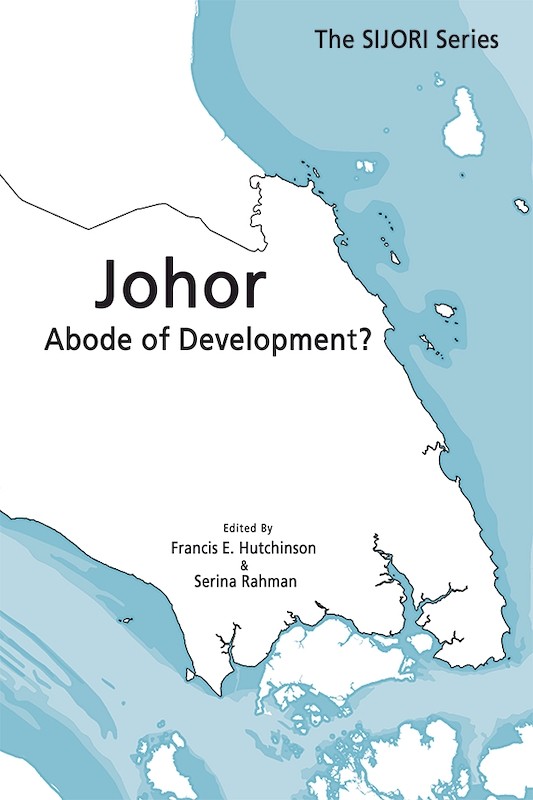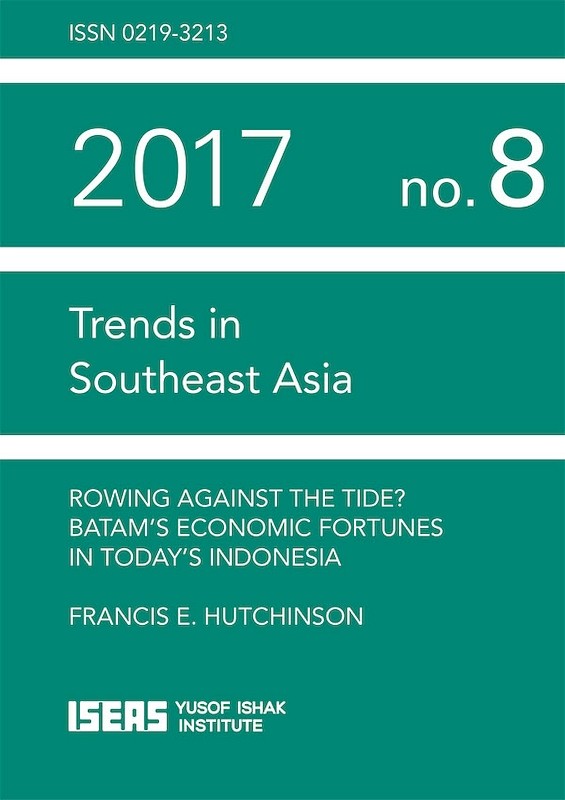Mirror Images in Different Frames? Johor, the Riau Islands, and Competition for Investment from Singapore
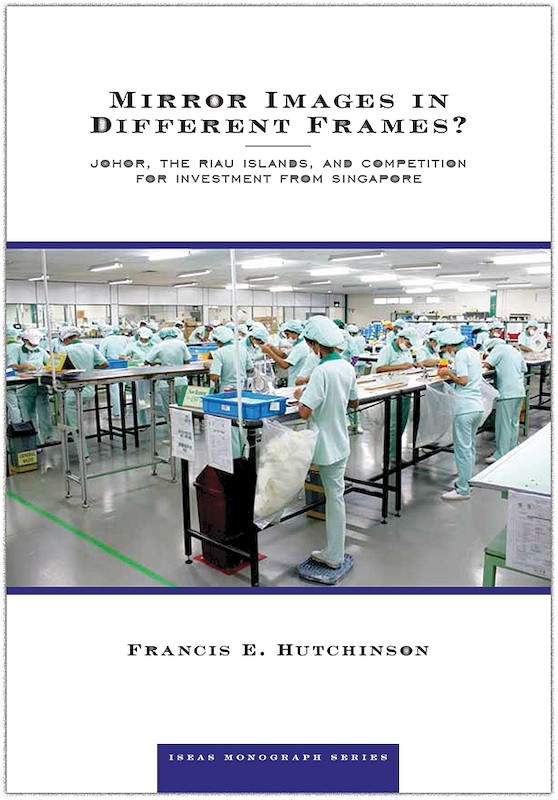
Francis E Hutchinson, author
Date of publication:
2015
Publisher:
Institute of Southeast Asian Studies
Number of pages:
150
Code:
BM519
Hard Cover
ISBN: 9789814620451
Reviews
Asian-Pacific Economic Literature.
".... This monograph explores the conditions under which meso-level governments choose to pursue structural transformation by way of industrialisation.
.... On balance, the book is an important piece of research, as it adds to our understanding of decentralization and fiscal federalism. It provides an update on the erstwhile SIJORI Growth Triangle, which has received relatively little attention since the Asian financial crisis. It also fulfils the need for a detailed comparative study about different economic outcomes from different economic and political incentive structures. The book is certainly a good reference for researchers as well as for university students learning about decentralisation and fiscal federalism in Malaysia and Indonesia."
Journal of the Asia Pacific Economy,
"The monograph is informative and discusses various factors influencing the growth and development of Riau and Johor. The period examined from 1990 to 2013 also included some of the most turbulent times for the countries mentioned. Apart from the centre -- state dynamics, the social-cultural factors also provided interesting perspectives about development in the region. The monograph would serve as good reference material for academics, policy-makers and business executives undertaking economic and developmental research into the region."
Bulletin of Indonesian Economic Studies
"This monograph's analytic narrative sheds light on developmental variations in the cross-border region between Johor, in Malaysia, the Riau Islands, in Indonesia, and Singapore. It provides a convincing explanation of why the Riau Islands attracts less Singaporean investment than Johor and triggers less development, despite both areas having had similar economic circumstances in 1990. This book offers an important contribution to the field of institutional analysis; its topic would have been a relevant inclusion in Acemoglu and Robinson's Why Nations Fail: The Origins of Power, Prosperity, and Poverty (2012).
The book is at ease promoting the merits of institutional analysis in explaining developmental factors typically glossed over by mainstream economic theories."
".... This monograph explores the conditions under which meso-level governments choose to pursue structural transformation by way of industrialisation.
.... On balance, the book is an important piece of research, as it adds to our understanding of decentralization and fiscal federalism. It provides an update on the erstwhile SIJORI Growth Triangle, which has received relatively little attention since the Asian financial crisis. It also fulfils the need for a detailed comparative study about different economic outcomes from different economic and political incentive structures. The book is certainly a good reference for researchers as well as for university students learning about decentralisation and fiscal federalism in Malaysia and Indonesia."
Journal of the Asia Pacific Economy,
"The monograph is informative and discusses various factors influencing the growth and development of Riau and Johor. The period examined from 1990 to 2013 also included some of the most turbulent times for the countries mentioned. Apart from the centre -- state dynamics, the social-cultural factors also provided interesting perspectives about development in the region. The monograph would serve as good reference material for academics, policy-makers and business executives undertaking economic and developmental research into the region."
Bulletin of Indonesian Economic Studies
"This monograph's analytic narrative sheds light on developmental variations in the cross-border region between Johor, in Malaysia, the Riau Islands, in Indonesia, and Singapore. It provides a convincing explanation of why the Riau Islands attracts less Singaporean investment than Johor and triggers less development, despite both areas having had similar economic circumstances in 1990. This book offers an important contribution to the field of institutional analysis; its topic would have been a relevant inclusion in Acemoglu and Robinson's Why Nations Fail: The Origins of Power, Prosperity, and Poverty (2012).
The book is at ease promoting the merits of institutional analysis in explaining developmental factors typically glossed over by mainstream economic theories."
The Business Times
‘Hutchinson has provided a strong response to one of social science’s long-standing questions: why some regions develop faster than others. The book is a welcome addition to the literature on cross-border regions, foreign investment, institutional analysis, and Southeast Asian studies’."Francis Hutchinson's comprehensive study of the divergent development trends in Johor and the Riau Islands is timely, coming about 25 years after the launch of the Singapore-Johor-Riau Growth Triangle project. It is also helpful in being published at a time when Singapore is updating its economic growth model, with potentially a greater emphasis on linkages with its immediate hinterland. There are two reasons why Hutchinson's book is an important contribution to our understanding of key issues. At a theoretical level, Hutchinson's research throws considerable light on the debate about the conditions under which sub-national governments can produce benign economic outcomes for their peoples. At a practical level, anyone interested in understanding how Singapore can best leverage off its hinterland of Johor and the Riau Islands will learn much from this book. First, if one looks at the contribution to the theoretical debate, the analysis marks a helpful contribution to the study of fiscal federalism. In particular, the book helps us to better weigh the merits of 'first generation fiscal federalism' against the alternative theory of 'second generation fiscal federalism'. The second reason this book is a real contribution is the detailed research Hutchinson offers the reader about economic development strategies pursued in Johor and the Riau Islands and the political factors that determine these development approaches. Hutchinson shows how these strategies have changed over the years and the factors that explain these changes. In doing so, he gives even those who have followed the region over many years new insights and a better appreciation of the practical issues businesses face on the ground. Overall, Hutchinson's book helps advance our understanding of the southern Malacca region. This analysis is particularly helpful as Singapore re-formulates its growth model. With the developed economies which Singapore depended on for its rapid development likely to slow and new economic powers growing in Asia, Singapore will have to fashion to a new way of leveraging off its immediate hinterland in order to compete as a global city. Studies like this helps advance our appreciation of the intricacies of the region and how best Singapore should proceed in developing mutually beneficial integration with our neighbours."
About the publication
In the early 1990s, Singapore, the Malaysian state of Johor, and the Riau Islands in Indonesia sought to leverage their proximity, differing factor endowments, and good logistics connections to market themselves as an integrated unit. Beyond national-level support in all three countries, the initiative had the support of state and provincial leaders in Johor and Riau, respectively.
Now, however, the situation is markedly different. The Malaysian government and its Johorean equivalent have invested considerable resources in encouraging closer integration with Singapore. For its part, the Indonesian central government has been promoting special economic zones and export-oriented activities. However, the provincial government of the Riau Islands has turned away from export-oriented industrialization, preferring instead to promote cultural sub-nationalism and traditional economic activities such as fishing and small-scale farming.
This development is counter-intuitive. Traditional fiscal federalism theory argues that decentralization encourages competition between provinces for investment, jobs, and growth. While Indonesia has undergone one of the world's most far-reaching decentralization reforms, Malaysia has pursued a consistent centralization campaign at the expense of state governments. Thus, we would expect the Riau Islands entrepreneurial drive to be unleashed, and Johor's to be smothered.
However, Johor's drive for capital is undiminished, while the Riau Islands pursuit of investment has dissipated. This monograph will explore the reasons for this paradox.
"This book provides a path-breaking analysis of how Johor and the Riau Islands have competed with each other for FDI from Singapore in the electronics sector. It sheds light on how the institutional and incentive structures facing these regions have encouraged or discouraged policy innovation and dynamism. The rigorous analysis of financial and investment data in this book provides a convincing challenge to the conventional wisdom that proximity and cost differentials inevitably lead to closer economic integration."
- Professor Shujiro Urata, Waseda University
Now, however, the situation is markedly different. The Malaysian government and its Johorean equivalent have invested considerable resources in encouraging closer integration with Singapore. For its part, the Indonesian central government has been promoting special economic zones and export-oriented activities. However, the provincial government of the Riau Islands has turned away from export-oriented industrialization, preferring instead to promote cultural sub-nationalism and traditional economic activities such as fishing and small-scale farming.
This development is counter-intuitive. Traditional fiscal federalism theory argues that decentralization encourages competition between provinces for investment, jobs, and growth. While Indonesia has undergone one of the world's most far-reaching decentralization reforms, Malaysia has pursued a consistent centralization campaign at the expense of state governments. Thus, we would expect the Riau Islands entrepreneurial drive to be unleashed, and Johor's to be smothered.
However, Johor's drive for capital is undiminished, while the Riau Islands pursuit of investment has dissipated. This monograph will explore the reasons for this paradox.
"This book provides a path-breaking analysis of how Johor and the Riau Islands have competed with each other for FDI from Singapore in the electronics sector. It sheds light on how the institutional and incentive structures facing these regions have encouraged or discouraged policy innovation and dynamism. The rigorous analysis of financial and investment data in this book provides a convincing challenge to the conventional wisdom that proximity and cost differentials inevitably lead to closer economic integration."
- Professor Shujiro Urata, Waseda University
Contents
-
Mirror Images in Different Frames? Johor, the Riau Islands, and Competition for Investment from Singapore
[Whole Publication, ISBN: 9789814620468], by Francis E Hutchinson, author

